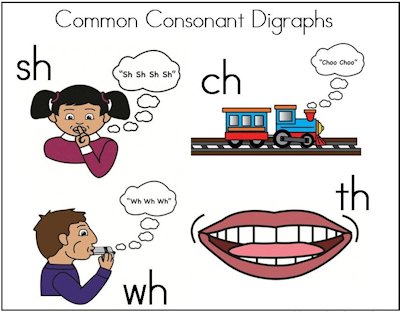
Digraph (orthography) - Term 8
A digraph is a combination of two letters representing one sound, as in sh and
ly.
A digraph or digram (from the Greek "to write") is a pair of characters used to
write one phoneme (distinct sound) or a sequence of phonemes that does not
correspond to the normal values of the two characters combined. The sound is
often, but not necessarily, one which cannot be expressed using a single
character in the orthography used by the language. Usually, the term "digraph"
is reserved for graphemes whose pronunciation is always or nearly always the
same.
When digraphs do not represent a distinct phoneme, they may be relics from an earlier period of the language when they did have a different pronunciation, or represent a distinction which is made only in certain dialects, like wh in English. They may also be used for purely etymological reasons, like rh in English.
Consonant digraphs include bl, br, ch, ck, cl, cr, dr, fl, fr, gh, gl, gr, ng, ph, pl, pr, qu, sc, sh, sk, sl, sm, sn, sp, st, sw, th, tr, tw, wh, wr. Some trigraphs are nth, sch, scr, shr, spl, spr, squ, str, thr.